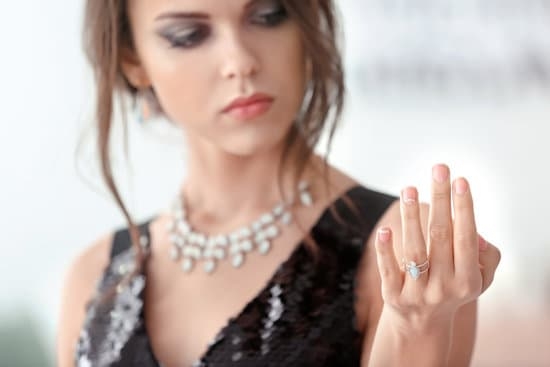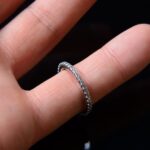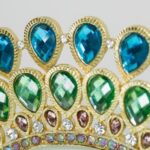Fashion jewelry has become a popular accessory choice for many individuals, offering style and affordability. However, have you ever wondered about the pricing of fashion jewelry? Understanding the average markup on these pieces can provide valuable insight into the industry.
In this article, we will delve into the world of fashion jewelry pricing, exploring factors that contribute to the final cost, industry insights on markups, and how branding and trends influence pricing. By gaining a better understanding of the business side of the fashion jewelry industry, consumers can make informed purchasing decisions and get the best value for their money.
The allure of fashion jewelry lies in its ability to stay on-trend without breaking the bank. It allows individuals to accessorize and express their personal style without making a significant financial commitment. However, it is essential to know the average markup on fashion jewelry to ensure that you are getting a fair deal. By understanding how prices are determined in this market, consumers can confidently navigate through various options and evaluate their choices effectively.
Setting the stage for our discussion, this introductory section aims to highlight the importance of understanding the business side of the fashion jewelry industry. It takes into account factors such as materials used, labor costs, brand reputation, and craftsmanship impact that contribute to the final price tag. By uncovering what drives the cost of fashion jewelry, we can gain valuable insights into average markups across sellers in this industry.
In an era where transparency is increasingly expected from brands and retailers, it is crucial for consumers to be empowered with knowledge about fashion jewelry pricing. By shedding light on statistical data regarding average markups, providing insights from experts within this field, and discussing variation in markups across different categories of fashion jewelry, we aim to equip readers with valuable information when making their next purchase.
The following sections will explore additional aspects such as retail versus wholesale markups and how branding and luxury play a role in determining pricing. With a comprehensive understanding of how these factors dictate fashion jewelry markups, consumers can confidently navigate the market and make well-informed purchasing decisions.
What Drives the Cost of Fashion Jewelry?
When it comes to the pricing of fashion jewelry, there are several factors that contribute to the final cost. Understanding these factors is essential for both consumers and those in the industry. In this section, we will delve into what drives the cost of fashion jewelry and how these factors impact pricing.
One of the key elements that determine the price of fashion jewelry is the materials used. Different materials can vary greatly in cost, which ultimately affects the overall price of the piece. Precious metals such as gold and silver tend to be more expensive than base metals like brass or stainless steel. Similarly, gemstones and diamonds can significantly increase the cost of a piece. The quality, size, and rarity of these materials also play a role in determining their price.
In addition to materials, labor costs and craftsmanship also factor into the cost of fashion jewelry. Skilled artisans who handcraft intricate designs may command higher wages, resulting in a higher price tag for their pieces. The level of detail and complexity in a piece can also affect its price as it requires more time and skill to create.
Furthermore, brand reputation plays a significant role in influencing the cost of fashion jewelry. Established brands with a strong reputation often command higher prices due to their perceived value and desirability among consumers. This factor allows them to place a premium on their products, driving up markups even further.
| Factors | Impact on Pricing |
|---|---|
| Materials used | Different materials have varying costs. |
| Labor costs | Skilled artisans may demand higher wages. |
| Craftsmanship | Intricate and detailed designs can increase the price. |
| Brand reputation | Established brands can charge a premium due to perceived value. |
Understanding these driving factors is crucial for both consumers and industry professionals. It allows consumers to make informed purchasing decisions based on their budget and preferences, while industry professionals can strategically price their products based on these factors. By taking into account materials, labor costs, craftsmanship, and brand reputation, one can better understand why fashion jewelry is priced the way it is.
Industry Insights
The fashion jewelry industry is a multi-billion dollar industry that continues to grow rapidly. With its widespread popularity, many consumers are curious about the average markup on fashion jewelry. In this section, we will delve into industry insights and unveil the average markup on fashion jewelry.
To begin with, it’s important to understand that markups in the fashion jewelry industry can vary widely depending on various factors. These factors include the brand reputation, materials used, craftsmanship, and demand for specific styles or materials. According to statistical data from industry experts and insiders, the average markup across fashion jewelry sellers ranges from 100% to 300%.
However, it is essential to note that markups can differ significantly across different categories within the fashion jewelry market. For example, designer brands and luxury jewelry tend to command higher markups compared to mass-produced or costume jewelry. The perceived value of branded jewelry and its association with luxury contribute to these higher markups.
In addition to brand and category factors, other elements like raw material costs, labor expenses, marketing efforts, and overhead costs also play a role in determining the final price tag of fashion jewelry. Therefore, understanding these markups can empower consumers to make informed purchasing decisions and evaluate whether they are getting a fair price for their desired piece.
| Factors Affecting Markups | Range of Average Markup |
|---|---|
| Brand Reputation | 100%-300% |
| Raw Material Costs | Varies based on material prices |
| Labor Expenses | Varies based on craftsmanship and complexity |
| Demand for Specific Styles/Materials | Can drive up markups significantly |
Understanding Retail Markups versus Wholesale Markups
In the fashion jewelry industry, it’s crucial to understand the distinction between retail markups and wholesale markups. This knowledge can help consumers have a better understanding of how prices are determined and make more informed purchasing decisions.
At its core, the difference between retail markups and wholesale markups lies in the stages of the supply chain. Retail markups occur when fashion jewelry is sold directly to the end consumer, while wholesale markups happen when jewelry is sold to retailers or distributors who then sell it to consumers.
Retailers play a significant role in the fashion jewelry market as they curate collections and create an experience for customers. As a result, they often apply higher markup percentages compared to wholesalers. This is because retailers have additional costs such as rent, staff salaries, marketing expenses, and other overhead costs that need to be factored into the final price.
On the other hand, wholesalers work with manufacturers or designers to distribute fashion jewelry on a larger scale. They often receive lower unit prices for buying in bulk, allowing them to sell at reduced prices compared to retailers. However, wholesalers still apply their own markup percentage to cover their costs and generate profit.
To illustrate these differences further:
- Retail markup percentages typically range from 50% to 100%. This means that if a piece of fashion jewelry costs $50 for the retailer, they may sell it for $75-$100.
- Wholesale markup percentages are generally lower since wholesalers sell in larger quantities. They might apply a markup of around 20% to 50%. If a piece of jewelry costs $30 for the wholesaler, they could sell it for $36-$45.
It’s important to note that these percentages can vary depending on various factors such as brand reputation, competition in the market, exclusivity of designs or materials used, and overall demand for specific fashion jewelry pieces. By understanding these distinctions between retail and wholesale markups, consumers can better evaluate the value they are getting for their money and make informed decisions when purchasing fashion jewelry.
The Influence of Branding and Luxury on Fashion Jewelry Pricing
When it comes to fashion jewelry pricing, the influence of branding and luxury cannot be ignored. In this section, we will explore how these factors impact the pricing of fashion jewelry and contribute to markups. Understanding the role of branding and luxury in the industry is essential for consumers who want to make informed purchasing decisions and get the best value for their money.
Analyzing the impact of branding on fashion jewelry pricing
Branding plays a significant role in determining the price of fashion jewelry. Luxury brands with a strong reputation in the market can command higher markups compared to lesser-known or generic brands. This is because consumers associate luxury brands with high quality, exclusivity, and prestige. The brand itself becomes a symbol of status and wealth, which drives up its perceived value.
How luxury and designer brands command higher markups
Luxury fashion jewelry often features unique designs, superior craftsmanship, and the use of precious materials such as diamonds, gemstones, and fine metals. The combination of these factors contributes to higher production costs and justifies higher price tags. Additionally, luxury brands invest heavily in marketing, advertising, and creating an aura around their products, further enhancing their desirability.
Discussing the perceived value of branded jewelry and its contribution to markups
The perceived value of branded fashion jewelry is another factor that contributes to markups. Consumers are willing to pay more for a piece simply because it carries a well-known brand name or logo.
Owning an item from a prestigious brand gives individuals a sense of status and belonging to an exclusive club. As a result, consumers are often willing to overlook higher prices if they believe they are getting not only high-quality jewelry but also ownership of a recognizable brand.
Examining consumer behaviors and preferences towards branded fashion jewelry is crucial for understanding how price expectations are formed in the market. Some shoppers prioritize brand recognition and are willing to pay a premium for branded items. Others may be more price-conscious and seek affordable alternatives that offer similar style and quality without the hefty markup.
By understanding the impact of branding and luxury on fashion jewelry pricing, consumers can make better-informed decisions about their purchases. They can weigh the value they place on brand prestige against their budget constraints and preferences. Additionally, consumers can explore alternative options that offer comparable quality and style without the high markups associated with luxury brands.
The Role of Trends and Seasonality in Determining Markups
In the fast-paced world of fashion, trends play a significant role in determining the pricing and markups of fashion jewelry. Fashion-conscious consumers are constantly seeking the latest styles and designs, which creates a high demand for specific types of jewelry. As a result, retailers often capitalize on these trends by increasing their markups to maximize profits.
Trends can have a significant impact on fashion jewelry pricing because they drive consumer demand. When a particular style or material becomes popular, it is not uncommon for prices to rise accordingly. Retailers know that customers are willing to pay a premium for trendy pieces, allowing them to apply higher markups. For example, if there is a surge in popularity for rose gold jewelry or statement earrings, the markups on these items are likely to increase as well.
Seasonality also plays a crucial role in determining markups on fashion jewelry. Different times of the year influence consumer behavior and demand patterns. For instance, during holiday seasons like Christmas or Valentine’s Day, there is typically an increased demand for romantic-themed jewelry such as heart-shaped pendants or diamond rings. Retailers take advantage of this surge in demand by adjusting their prices and markups accordingly.
To further understand how trends and seasonality affect pricing and markups, it is essential to examine market dynamics throughout the year. By analyzing data on consumer preferences and purchasing habits during different seasons or events, industry experts can pinpoint which trends drive the highest markups at specific times. This information becomes invaluable to retailers looking to optimize their inventory and pricing strategies to meet changing consumer demands.
Considering trend-driven markups when purchasing fashion jewelry is crucial for consumers looking for fair prices. It is important for buyers to be aware that they may be paying inflated prices due to current trends or seasonal events. To navigate this dynamic marketplace effectively, consumers should research market trends before making a purchase decision and compare prices across different retailers. By doing so, consumers can make informed choices and potentially find more affordable alternatives without compromising on quality and style.
How to Determine a Fair Price for Fashion Jewelry
Evaluating the Value of Fashion Jewelry
When it comes to determining a fair price for fashion jewelry, it’s essential to evaluate its value based on various factors. One of the most important aspects to consider is the quality of the materials used. Higher-quality materials such as genuine gemstones or precious metals will typically drive up the price of fashion jewelry.
Additionally, craftsmanship plays a significant role in determining the value of a piece. Handcrafted or intricate designs often command higher prices due to the skill and effort put into creating them.
Another important consideration is comparing prices and researching market trends. By looking at similar pieces from different sellers, you can gain insights into pricing patterns within the fashion jewelry industry.
Pay attention to any discounts or promotions that may be offered by retailers, as they can help you find better deals. It’s also beneficial to stay informed about current market trends and demand patterns for specific styles or materials, as this knowledge can help you gauge whether a price is fair or overpriced.
Lastly, it’s crucial to take into account your preferences and personal style when evaluating the value of fashion jewelry. While brand names and luxury designs may command higher markups, it doesn’t mean they are always worth the price tag for everyone.
Consider what features are most important to you in a piece of jewelry and what aligns with your personal style. This way, you can prioritize certain aspects while shopping and avoid overspending on elements that hold less value for you.
Negotiating Better Deals or Finding Affordable Alternatives
Sometimes, finding a fair price for fashion jewelry involves not just evaluating its value but also exploring different purchasing options. One approach is to negotiate better deals with sellers or retailers.
Many jewelry stores often have some flexibility in their pricing, especially if they are trying to move inventory or during seasonal sales events. Polite negotiation techniques might include asking if there are any ongoing promotions, inquiring about potential discounts if buying multiple items, or simply expressing your budget limitations and asking if there is any flexibility on the price.
Another option to consider is exploring more affordable alternatives. This can involve seeking out independent jewelry designers or smaller businesses that offer unique and well-crafted pieces at a lower price point. Additionally, considering vintage or pre-owned fashion jewelry can be a great way to find unique styles and high-quality pieces at a fraction of the cost of new jewelry.
Ultimately, determining a fair price for fashion jewelry requires careful consideration of its value, market trends, personal preferences, and available purchasing options. By using these strategies to inform your decision-making process, you can navigate the fashion jewelry market effectively and ensure that you get the best value for your money.
Conclusion
In conclusion, understanding the average markup on fashion jewelry is crucial for consumers who want to make informed purchasing decisions. Throughout this article, we have delved into various factors that contribute to the final price of fashion jewelry, including materials used, labor costs, brand reputation, and trends. By unveiling the average markup and providing insights from industry experts and insiders, we have shed light on the pricing dynamics within the fashion jewelry market.
Retail markups versus wholesale markups have also been discussed, highlighting the role of distributors, retailers, and wholesalers in determining the final price for consumers. Moreover, we have explored how branding and luxury influence fashion jewelry pricing, as well as how trends and seasonality impact markups. Armed with this knowledge, consumers can better evaluate the value of fashion jewelry and determine a fair price.
To navigate the fashion jewelry market effectively and get the best value for their money, readers are advised to compare prices, research market trends, and consider quality, materials, and craftsmanship. Negotiating better deals or finding affordable alternatives are also viable options. Empowering consumers with this knowledge enables them to make confident purchasing decisions that align with their tastes and budgets.
Frequently Asked Questions
What is standard jewelry markup?
Standard jewelry markup refers to the percentage by which the cost of producing or acquiring jewelry is increased to determine its retail price. This markup typically includes various expenses such as labor, materials, overhead costs, and desired profit margin.
The standard jewelry markup can vary depending on factors like the type of jewelry, market demand, brand reputation, and location. While there is no fixed percentage for standard jewelry markup, it is common for retailers to apply a markup of around 100-300% to cover their costs and earn a profit.
What is a good profit margin for jewelry?
Determining a good profit margin for jewelry depends on several factors including market conditions, target audience, brand positioning, and competition within the industry. As a general guideline, most businesses aim for a profit margin ranging anywhere from 40% to 60%.
This means that the selling price of the jewelry should be at least double or more than its production or acquisition cost to achieve an acceptable profit margin. However, it’s important for businesses to analyze their specific circumstances and conduct regular market research to determine an appropriate profit margin that aligns with their business goals while remaining competitive in the industry.
How to price fashion jewelry for resale?
Pricing fashion jewelry for resale involves considering various factors such as material quality, design uniqueness, brand presence, current trends, target market preferences, and perceived value among potential customers. It’s crucial to strike a balance between offering competitive pricing that attracts customers while still ensuring profitability.
To price fashion jewelry for resale effectively, conducting market research is essential to evaluate competitors’ pricing strategies and understand customer expectations. Businesses can also use various pricing techniques like keystone pricing (doubling the wholesale cost), pricing based on perceived value (higher prices for luxury/fashion-oriented designs), or conducting A/B testing with different price points to identify optimal prices that generate sales volume and profitability in the long run.

Welcome to my jewelry blog! My name is Sarah and I am the owner of this blog.
I love making jewelry and sharing my creations with others.
So whether you’re someone who loves wearing jewelry yourself or simply enjoys learning about it, be sure to check out my blog for insightful posts on everything related to this exciting topic!





